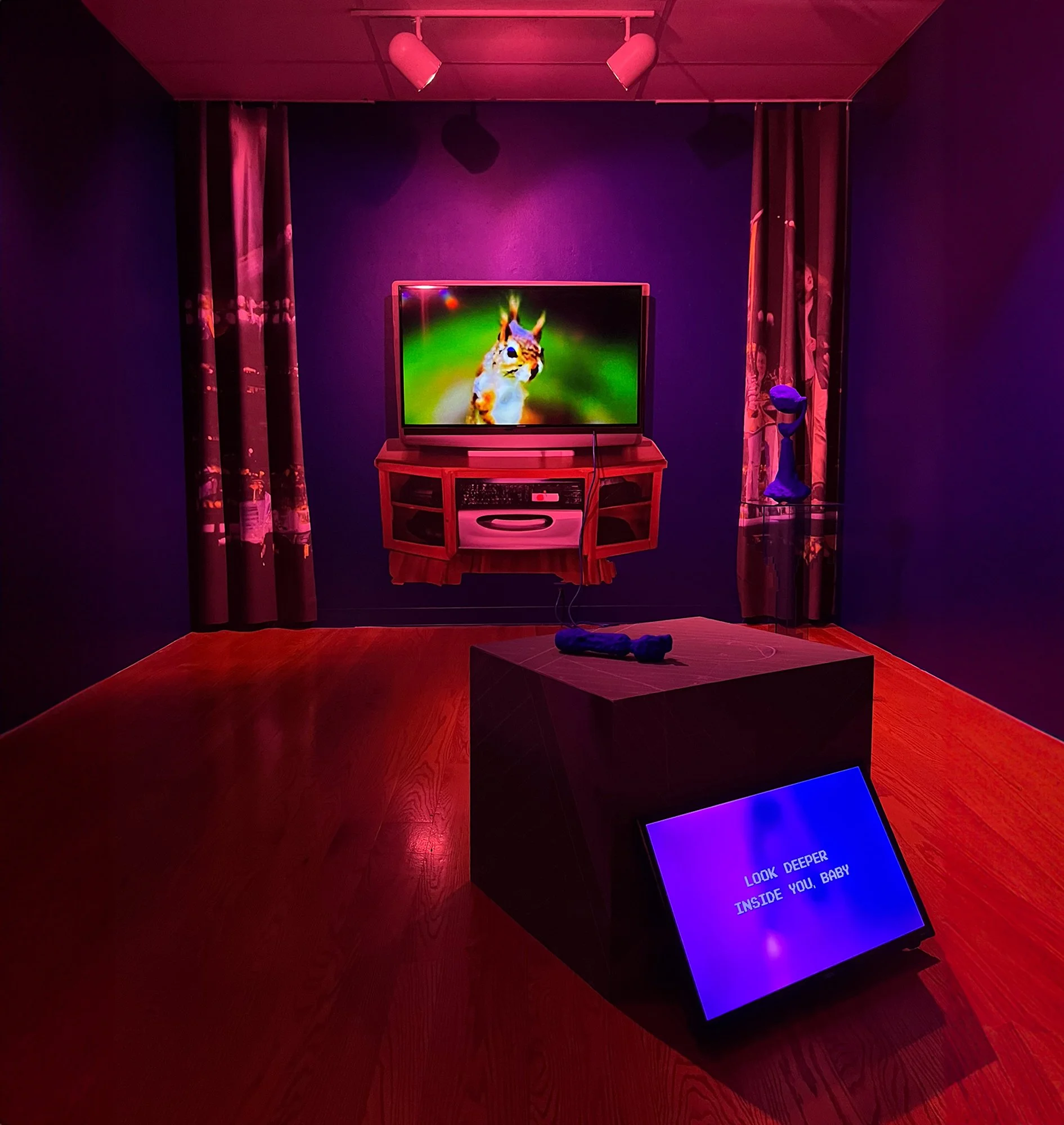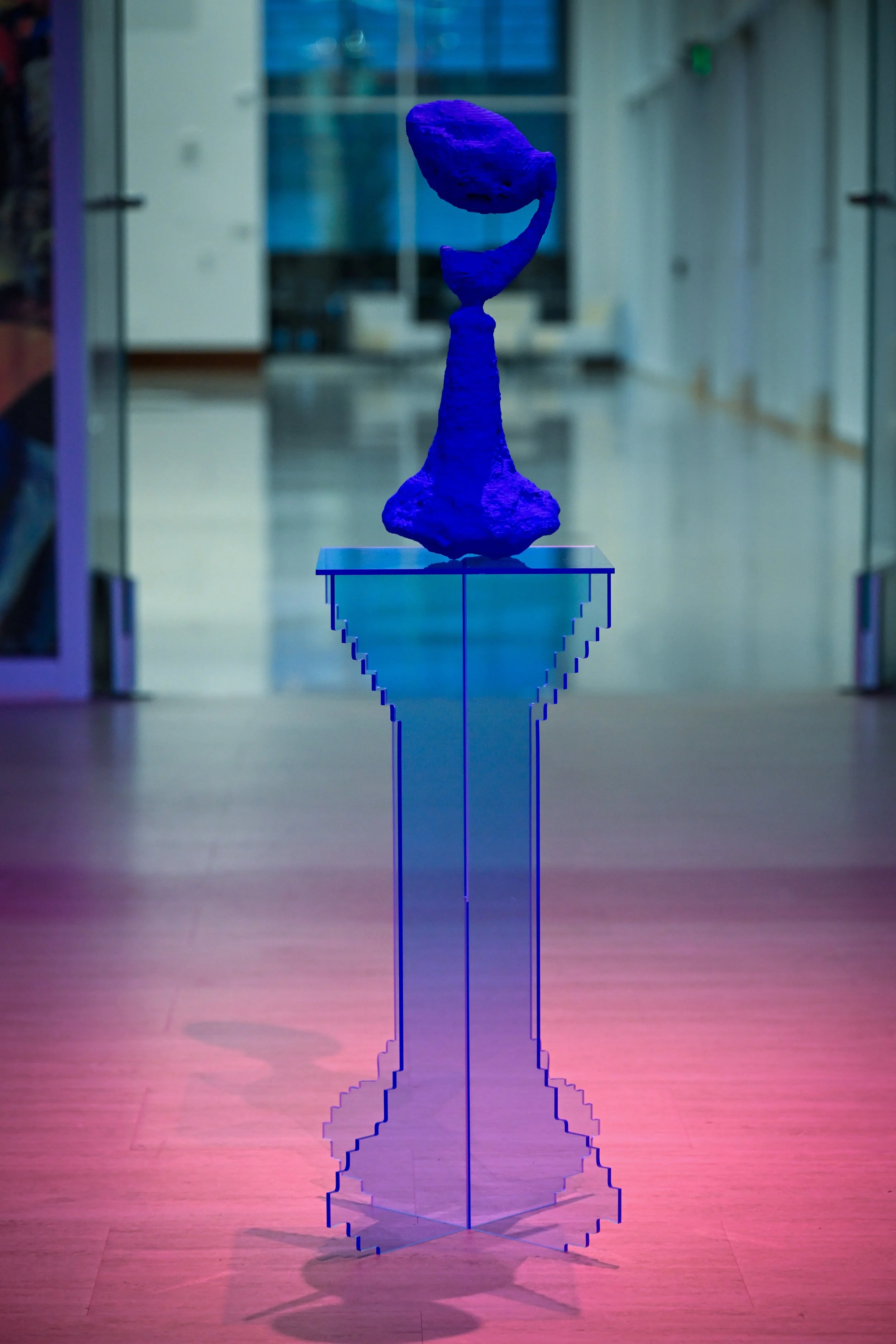REBECCA FORSTATER
TRAINING CAMP- SPOTLIGHT
How do we deal with an era of ever-expanding and shapeshifting public consciousness, where an AI-fueled rat race produces ever more peculiar social formations—and each fleeting instance of social progress is riddled with errors and mistakes? Where every personal and political question is inextricably linked with ideologies of race, gender, politics? Could the answer lie in…revisiting the watershed cultural moment of the Janet Jackson/Justin Timberlake Super Bowl XXXVIII halftime show?
Forstater speaks on existential realizations that we’re all battling with in this socio-technological era and draws connections with sometimes jarring, sometimes comical, but always relatable and nostalgic experiences.
And with that, here we are in conversation with Rebecca.
PW: A defining element of your work is “the production of current histories.” What does the term current history mean to you and how are they produced?
RF:
I use the term “current histories” to describe the ongoing production of history that takes place in digital spaces through user-generated content, an area that is central to my research and practice. Specifically, I’m interested in how these peer-to-peer digital exchanges have become powerful modes of communication, shaping our relationships with ourselves, each other, and society at large. In my studio practice, I engage with these digital platforms both materially and conceptually, reconfiguring the tools and applications designed to produce these “current histories.”
PW: Memes, pop-culture references, and the media landscape act as a deep well of references and raw materials for your work. And you talk about being torn between repulsion and familiarity between them. Where do you find yourself landing on that push and pull between repulsion and familiarity in 2025?
RF:
I come from the perspective of having been raised alongside the internet. I’m fluent in its language, but I also remember its evolution and the shifts in technology that continue to shape our ways of being. I think I’ll always exist somewhere in the middle ground between skepticism and awe when it comes to emerging technologies, though I probably lean closer to skepticism on most days. I find digital spaces both fascinating and deeply unsettling, as utopian visions of technological potential often evolve into concerning integrations within our everyday lives.
PW: The way you approach materials and space is really provoking. Your selection of translucent materials as solid forms contrasted against flat, 2D depictions of familiar spaces bends the perception of how the whole environment is perceived. What is your guiding thought process when selecting materials and scale for these installation works?
RF:
In my studio, there is always a back-and-forth exchange between digital and physical materials. I think about making the work in the same way we consume the internet, where constant circulation and transformation define the experience. I approach materiality and installation as reflections of digital experiences, shifting between fact and fiction, virtual and utopian, dystopian and dreamlike, before returning to physicality as the imagery circulates through my work.
PW: You talk about “questioning our own desires”—is there a particular philosophical frame within which you think about and talk about desire?
RF:
I think about desire through the framework of post-internet art, where our wants and identities are continuously mediated by the digital systems we inhabit. Desire is no longer private or purely internal. It is shaped, performed, and circulated through algorithms, imagery, and online exchanges. I am interested in how these digital structures both construct and exploit our desires, often blurring the line between genuine connection and consumption. Within my practice, questioning desire becomes a way to examine how digital culture mirrors and manipulates the human need for visibility, validation, and connection.
PW: How has your perception of media, memes, and pop culture shifted since COVID-19?
RF:
I’m not sure if my perspective has shifted, but the landscape of digital experiences certainly has. During that period of intense isolation, technology became the primary means of connection and information for many people. This dependence made the influence of media, memes, and pop culture even more pronounced, revealing how deeply these digital forms shape our collective means of communication and understanding of the world.
interested in seeing more of rebecca’s work?
A collection of their works will be on view from October 24th-October 25th.
Friday October 24th 6p-10p
Saturday October 25th 10a-5p
OPENING RECEPTION:
VIEWING HOURS:



